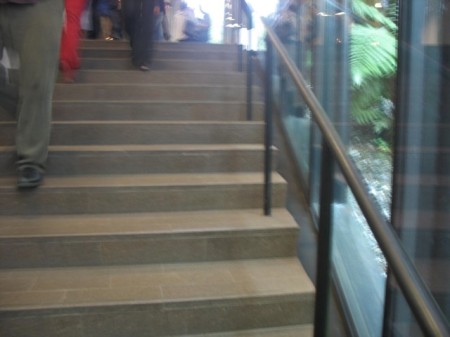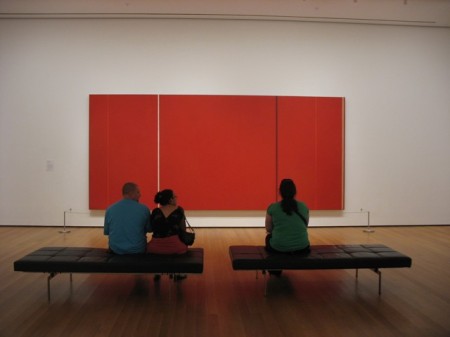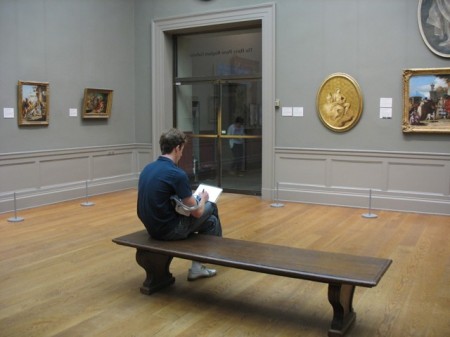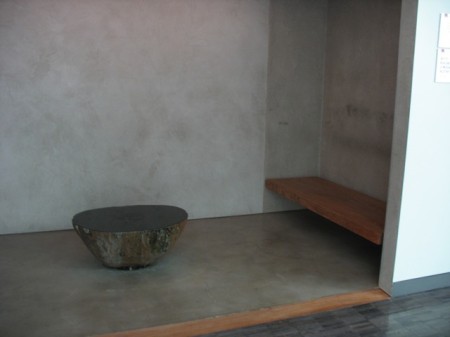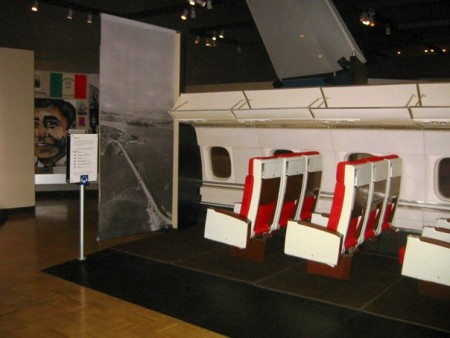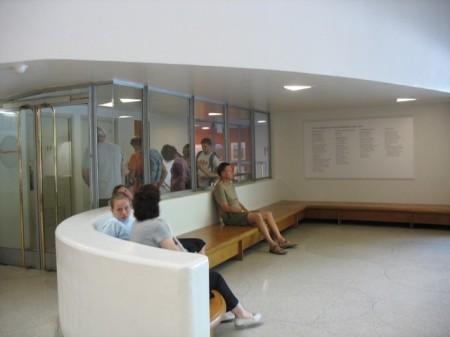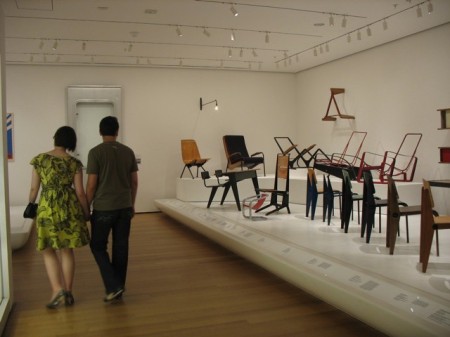The current Abstract Expressionist show at MOMA in New York has, I am pleased to report, a bench in just about every room of the exhibition.
What interested us, apart from an apparent change in attitude with regard to seating at MOMA (from almost none to more than adequate, at least for this show), was one particular pattern of use that we had not seen before.
Many visitors sat in order to gaze at the work more closely, and/or to rest. But some used the bench as an opportunity to interact with a handheld device.
From what we could see, these were not audio tour players, but smart phones or Blackberry-like devices. Users seemed to be checking messages or texts, or actually texting in at least one instance.
Are these simply visitors who are unable to be out of touch for more than a few minutes? Or is it another form of leaving the room and chilling out – changing gaze and focus not by looking out of a window, but into a window? Or both?























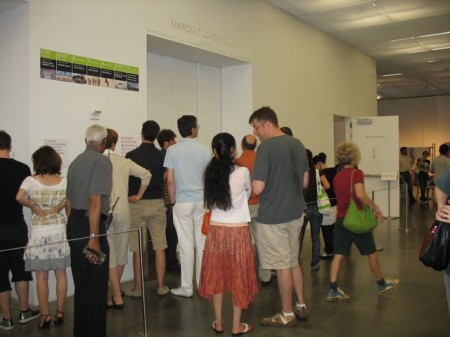
 It’s very artistic and all, but I would not want to be caught in this narrow space in an emergency.
It’s very artistic and all, but I would not want to be caught in this narrow space in an emergency. 